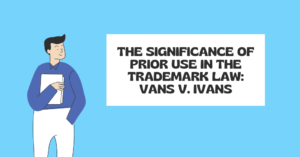Do you know how automotive companies in India protect their unique vehicle designs? Read this article to understand the importance of design patents, how to file one in India, and the step-by-step process to safeguard your automotive innovations.
Introduction
With the Indian Automotive industry moving at a fast pace, the one thing that defines the company’s standing is the innovation or uniqueness of the vehicle’s design. The rise in demand for new models and technology also calls for plenty of protection for these types of innovation. Designs play an important role in the attractiveness and branding of automotive goods and applications. In this article, we shall focus on how a design patent protects automotive innovations, the process to obtain one, and how it helps the automotive industry in India.
What Is a Design Patent?
Unlike utility patents, a design patent does not cover the way a product operates — it instead protects its appearance, including its shape, configuration and ornamentation. In the automotive world, this includes the exterior and interior styling of a vehicle, aka the car body, headlights, grill and dashboard, as well as the actual arrangement of the seats. Design patents differ from utility patents in that the latter protects the functional aspects of an invention, whereas design patents protect the aesthetic appeal of the product.
Vehicle design patent protection in India is granted under the Indian Design Act, 2000 and the Design Rules, 2001, under which a framework exists for registration and protection of industrial designs.
How Design Patents Protect Automotive Innovations in India
In a country like India, where automotive design innovation is paramount in establishing product differentiation in a saturated space, a design patent ensures protection of the characteristics. Design patent protection for vehicles ensures that no other manufacturer can reproduce or imitate a car’s unique design without facing legal repercussions.
A design patent allows automakers to stop the copying or replication of the design of their vehicle. This immunity is granted for 10 years and can be renewed. In a highly competitive space such as India, protecting market share as well as brand identity becomes crucial for automotive firms.
How to File a Design Patent in India
Filing a design patent in India involves a few systematic steps, ensuring that the innovation is properly registered and protected. Here’s how you can navigate the design patent application process in India for your vehicle design:
- Eligibility Check: The design should be new, original, and not previously disclosed or registered anywhere in India or abroad.
- Prepare the Design: You need to prepare detailed representations of the design, including drawings, photographs, or sketches showing the design’s appearance.
- Application Filing: The design application can be filed at the Indian Patent Office (IPO) online or physically. The application must include the design’s representation and a brief description of the design.
- Examination of Application: The design patent examination process in India involves a thorough review of the application to ensure it complies with the required legal standards. The design is scrutinized for novelty and originality.
- Approval and Registration: If the design passes the examination, the design is registered, and the applicant receives a design patent certificate. This grants the design exclusive protection rights.
Design Patent Requirements in India
There are specific design patent requirements in India that applicants must meet:
- The design must be novel and original. It should not have been published or used before in any form.
- The design must relate to an article or product and not to an abstract idea.
- The design should be applied to an industrial product, such as vehicles or vehicle parts.
- The design must not be contrary to public order or morality.
In the case of automotive companies, it becomes necessary for them to ensure that the design of the vehicle is concerned is compliant with these parameters before they can file for a design patent.
Cost of Design Patent in India
The cost of design patent in India varies depending on few factors such as the legal representation of the applicant, application fees & renewal fees. The filing fees for individuals and small entities are relatively low, making it an affordable option for automotive companies, especially startups or smaller players in the industry.
The statutory filing fee for individual is approximately INR 1,000 and for a company, the cost may rise up to INR- 4,000 for each application.
Steps to Obtain a Design Patent in India
Here are the steps to obtain a design patent in India for a vehicle:
- Prior Art Search: Before starting the process of filing an application, it’s important to look through existing patents to confirm the design is one that doesn’t already have an existing patented design.
- Filing the application : Submit the design along with required documentation to the Indian Patent Office.
- Examination: After filing, the application is examined to ensure the design is new, original, and complies with the Indian Designs Act, 2000.
- Examination Report: After examination, the IPO issues a report that either grants or rejects the design patent.
- Grant of Patent: If the design is approved, the patent is granted, and protection is ensured for 10 years.
Importance of Design Patent Protection for Vehicles
In the Indian automotive industry, protecting design patents is important for encouraging innovation. It also assists car manufacturers to safeguard the time, effort, and money invested in designing their cars so that other manufacturers do not copy them. With most Indian consumers inclined toward vehicles with distinctive and attractive aesthetics, automakers need to safeguard their design identity.
Furthermore, a design patent acts to protect the brand from counterfeit products flooding into the market, ensuring safety by preserving the integrity of the brand. It also provides automakers with the opportunity to distinguish themselves in a competitive market through the improved development and marketing of products with new and protected designs.
Indian Design Patent Laws
Indian design patent laws focus on protecting the ornamental or aesthetic qualities of industrial products, and the Indian Design Act is in alignment with international design protection standards. This allows the automakers in India to protect their vehicle designs and at the same time, apply for protection under the Hague System for international designs.
Conclusion
The Indian automotive industry is highly competitive and a design patent is an important way to protect innovative designs for vehicles. Having a deep understanding of how the Design Patent application process works in India along with the requirements, cost, and steps is imperative for automotive companies to protect their Intellectual Property. As the Indian automobile market expands, the demand for design protection will only increase, and it presents a great deal of value for the creators and innovators of automotive designs.
By filing a design patent in India, automotive companies can ensure that their creative innovations are well-protected, fostering a more vibrant and competitive automotive industry.









